Nduja Risotto
By Lee Jackson ↣ Published on: June 4, 2023
Nduja salami is a ready-made powerhouse of flavour that creates magic with whatever it touches. It’s the perfect addition to creamy, dreamy Italian risotto and results in a rich, spicy sauce that’s packed with Italian fire. Nduja Risotto is a triumph in colour, flavour and fragrance.
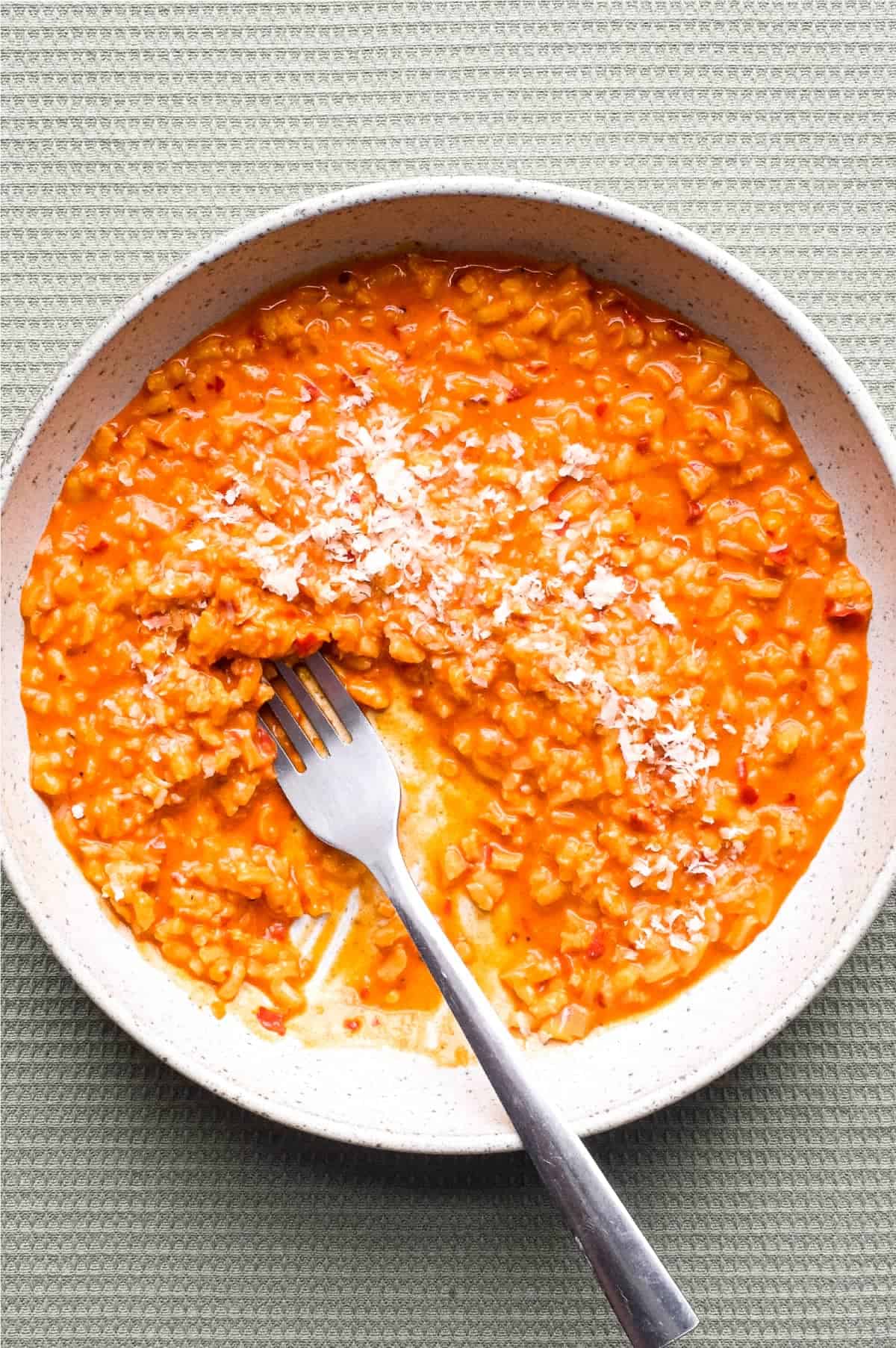
Nduja risotto is such a magnificent pairing of two very Italian ingredients. The soft, spreadable nduja salami is packed (and I mean packed) with flavour and delivers so many layers of taste to a simple risotto, to transform it into something memorable.
Rich in spice, nduja permeates every part of the rice to create a spicy, rich texture that isn't short on personality. It's intensely flavourful - smoky, sweet and hot. And it's so quick and easy to achieve, all of the heavy lifting is done by the nduja!
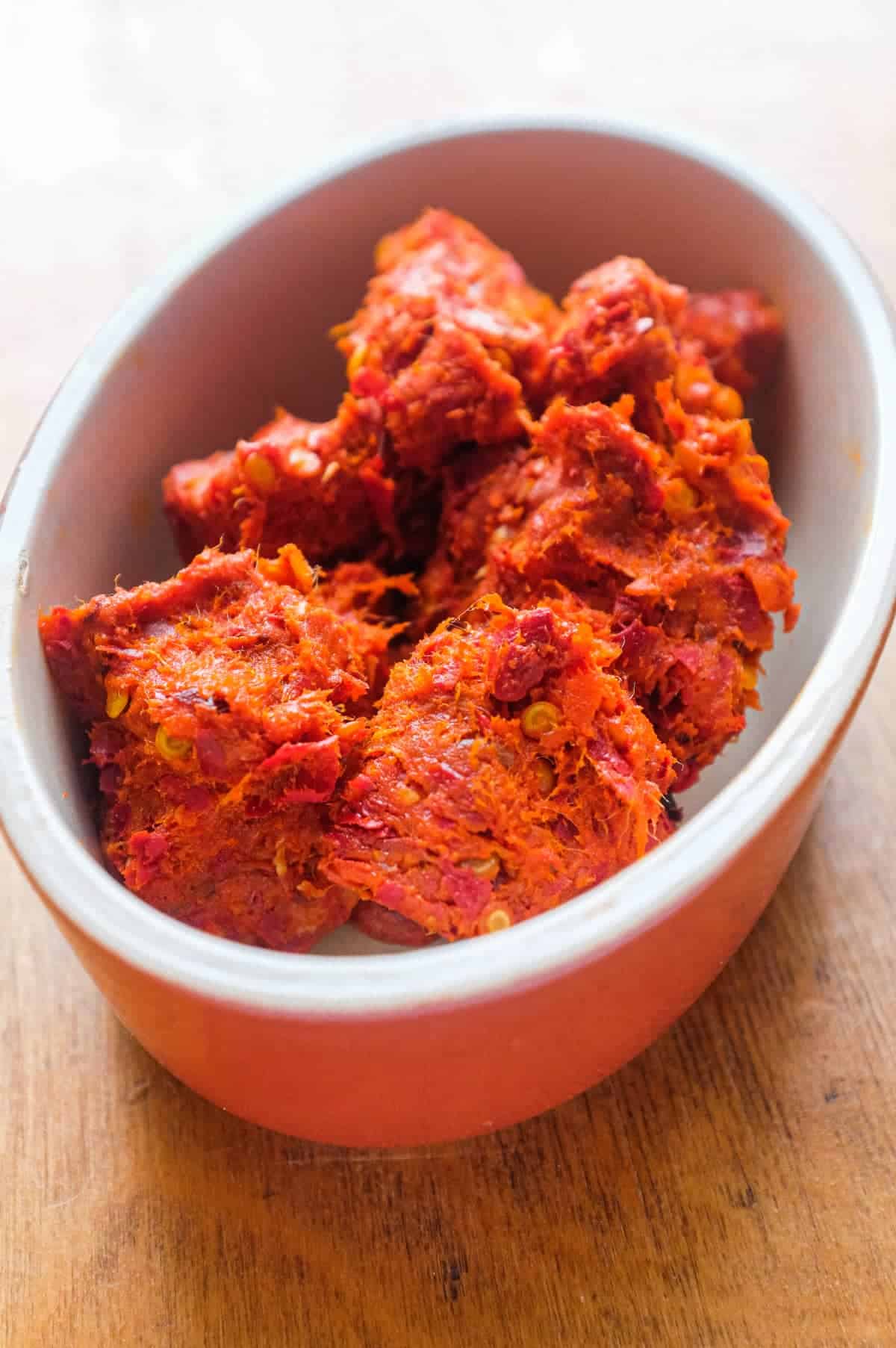
What is Nduja?
'Nduja (pronounced "en-DOO-ya") is a spicy, spreadable pork salami that originated in the southern region of Calabria, Italy. It is made from a mixture of ground pork, Calabrian chili peppers, salt, and spices, which are packed into a casing and aged for several months.
The resulting soft, paste-like mixture is often used as a condiment, spread on bread, or added to pasta sauces, risotto, soups, stews, and other dishes to add a bold, spicy note. It is famed for its intense, complex flavour and versatility in the kitchen.
Why it works?
It's not shy! - Nduja packs a wonderful and complex hit of flavour, colour and aroma and it's an absolute knockout mixed through creamy risotto. Typically spicy, but available in varying degrees of spice, nduja is unapologetically hot. so, If you're averse to spicy food, now may be your time to walk away.
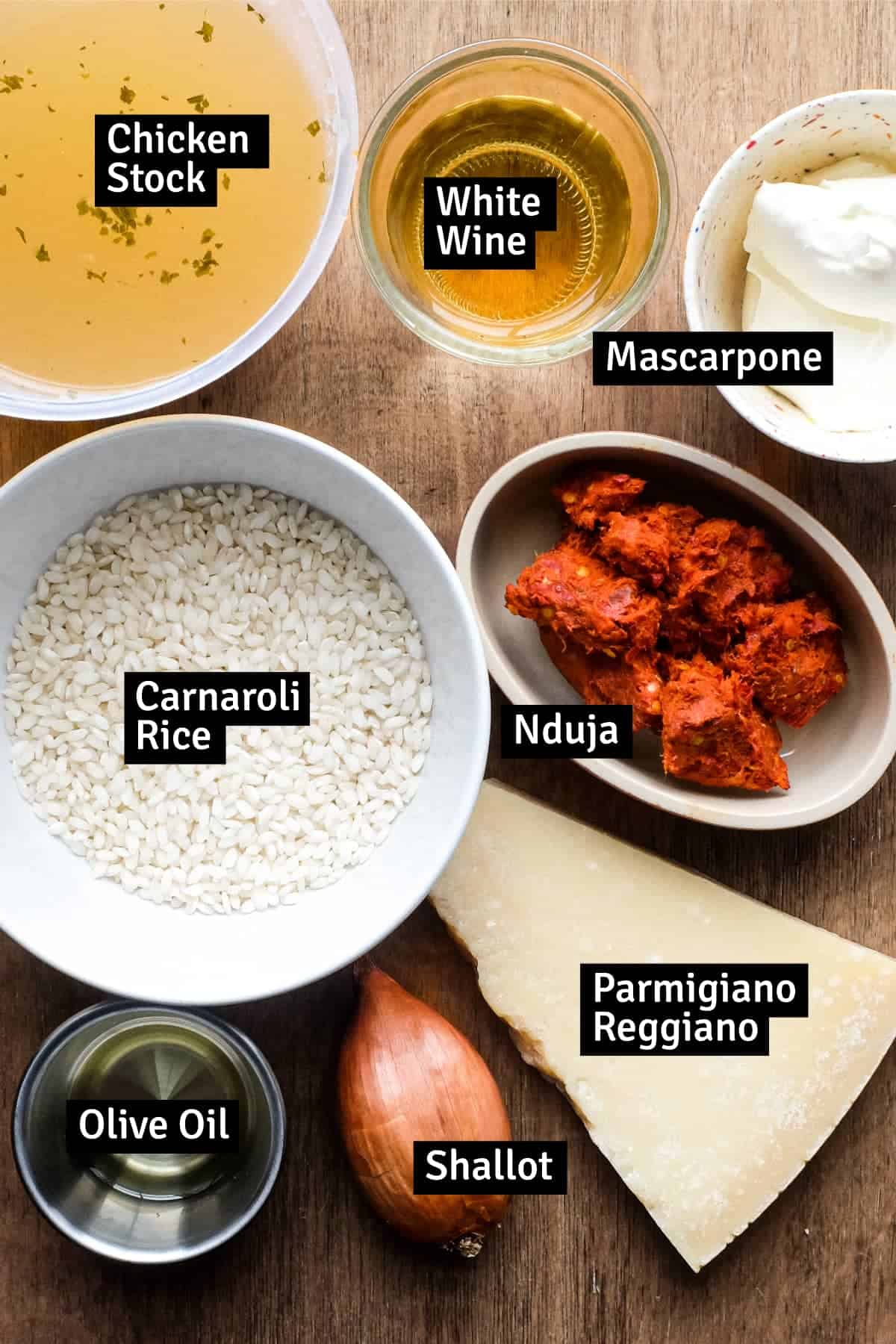
Stuff You'll Need
Creating this risotto is easy! Once you've tracked down some nduja sausage, everything else is found in the supermarket. Let me take you through the key ingredients.
- Nduja - Track it down in sausage form, you can also use Nduja sauce, which is perfect for this recipe.
- Carnaroli rice - this is perfect for risotto with its short grain and starchy make up. It creates all the rich creaminess that risotto is famous for. You could also use Arborio or Roma rice.
- Mascarpone - To help cool the flavours, I use mascarpone, a soft Italian cream cheese which ups the creamy game while tempering some of the chilli heat.
- Wine & stock - wine adds a little more floral notes to the sauce, while the stock helps add a depth of flavour.
- Parmigiano Reggiano - to finish off the risotto and to help with flavour and texture, a little cheese is beaten into the rice. Perfection!
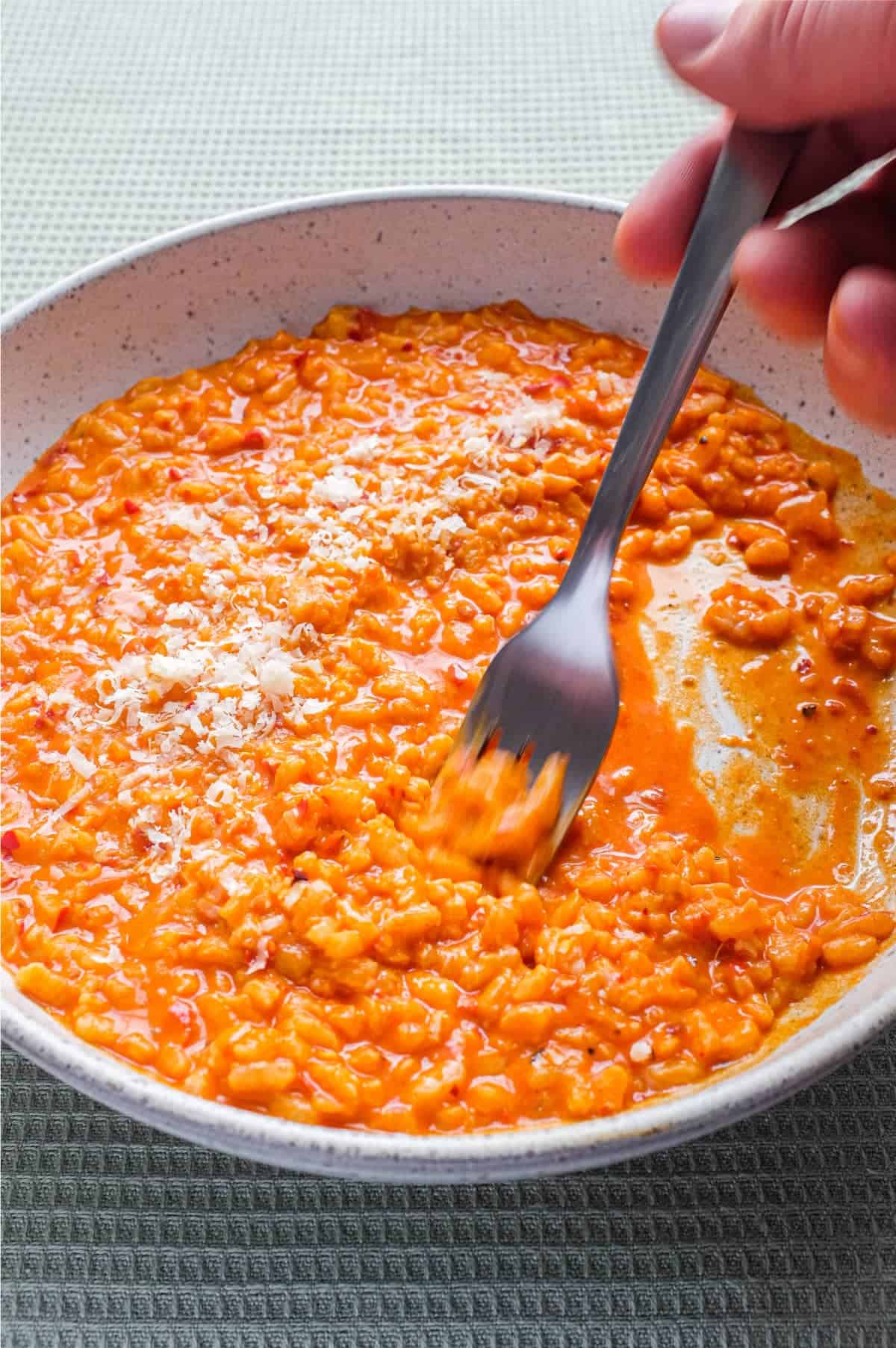
Step by Step
Making the nduja risotto is a simple affair. You just need to be sure you create the right texture for your risotto. It should be creamy, almost soup-like in appearance. No mounds or towers and if you can stand a spoon up in it, it's too thick.
- Step 1 - Heat some oil in a deep sauté pan over a medium heat and gently fry some finely chopped shallot for a couple of minutes to soften.
- Step 2 - Add the nduja (removed from its casing) and fry gently for a few minutes. The sausage will break up quickly and form a kind of paste. Add a splash of water if it begins to burn.
- Step 3 - Add the rice and stir to combine everything, fry for a minute or two.
- Step 4 - Splash in a little dry white wine and let the alcohol burn off for 30 seconds or so.
- Step 5 - Add 2-3 ladlefuls of hot chicken stock that you have in a separate pan next to the risotto. Let this sizzle for 1-2 minutes, stirring regularly until it's reduced down. Repeat this process for 12-20 minutes, adding more stock a little at a time, and stirring regularly. The rice will be cooked when you bite into it and it's soft, with the tiniest bit of resistance.
- Step 6 - Remove from the heat and stir in the mascarpone and a little Parmigiano Reggiano (known as the 'mantecare' stage). You should have a loose creamy texture, so add a little stock if it's too thick. Serve now! Right away!
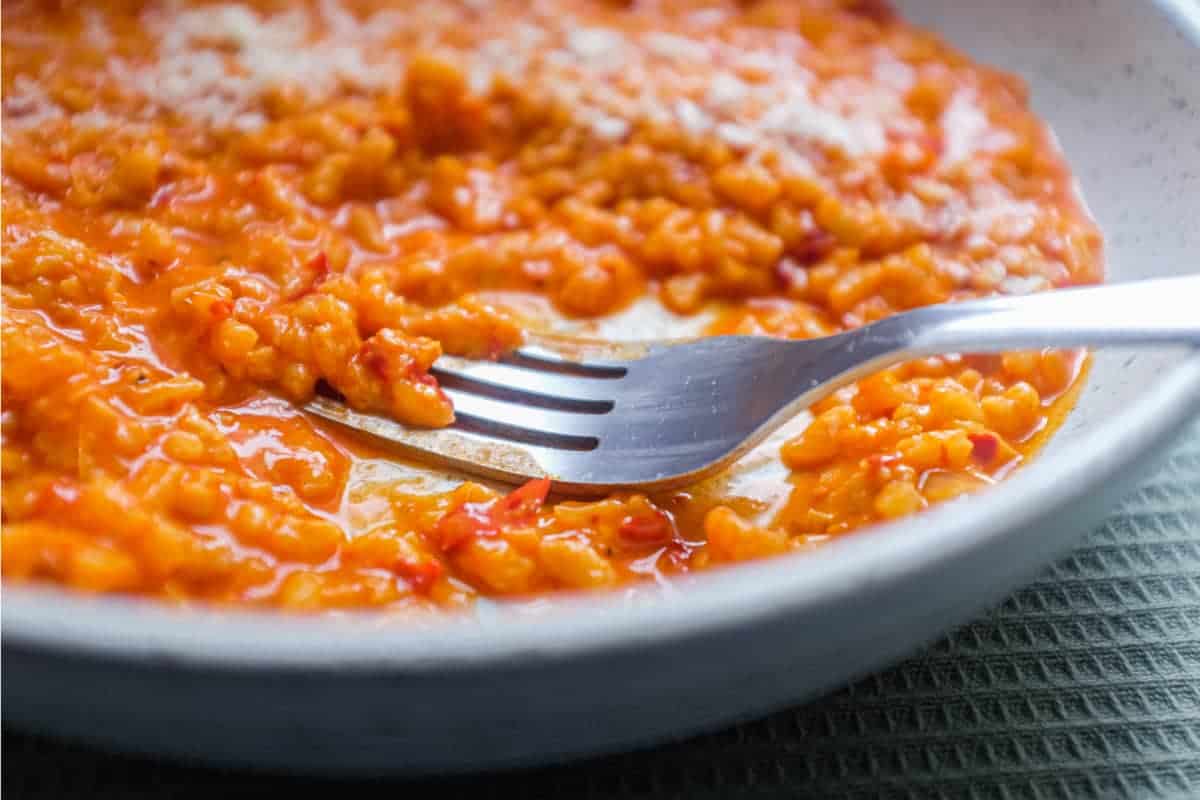
Pro Tips
- Hot stock - Be sure to have your stock hot alongside the rice, adding cold stock will reduce the temperature of the pan and affect the texture and time the risotto takes to cook.
- No mascarpone? - Instead of mascarpone, you could add a little double/whipping cream or regular cream cheese.
- Texture - a proper risotto is not thick and stodgy, it's rich, decadent and creamy. So be sure to serve it right away as the rice will continue to absorb the sauce until it becomes thick and stodgy.
- Leftovers? - Create arancini or suppli with leftover risotto - they're crunchtastic!
Serving & Storage Suggestions
- Serve hot and immediately. Have everyone in place at the dinner table, ready to go, as a good risotto can become a bad risotto if it sits around for too long. It's for that reason I don't suggest refrigerating or freezing unless you want to create rice balls (Arancini or Suppli) with the leftovers.
- I like to serve risotto as either a primi (appetiser) or secondi (main course). I'll generally accompany it some kind of vegetable or salad. On occasion, I may also crisp up a slice of prosciutto or pancetta and add it to the top too.
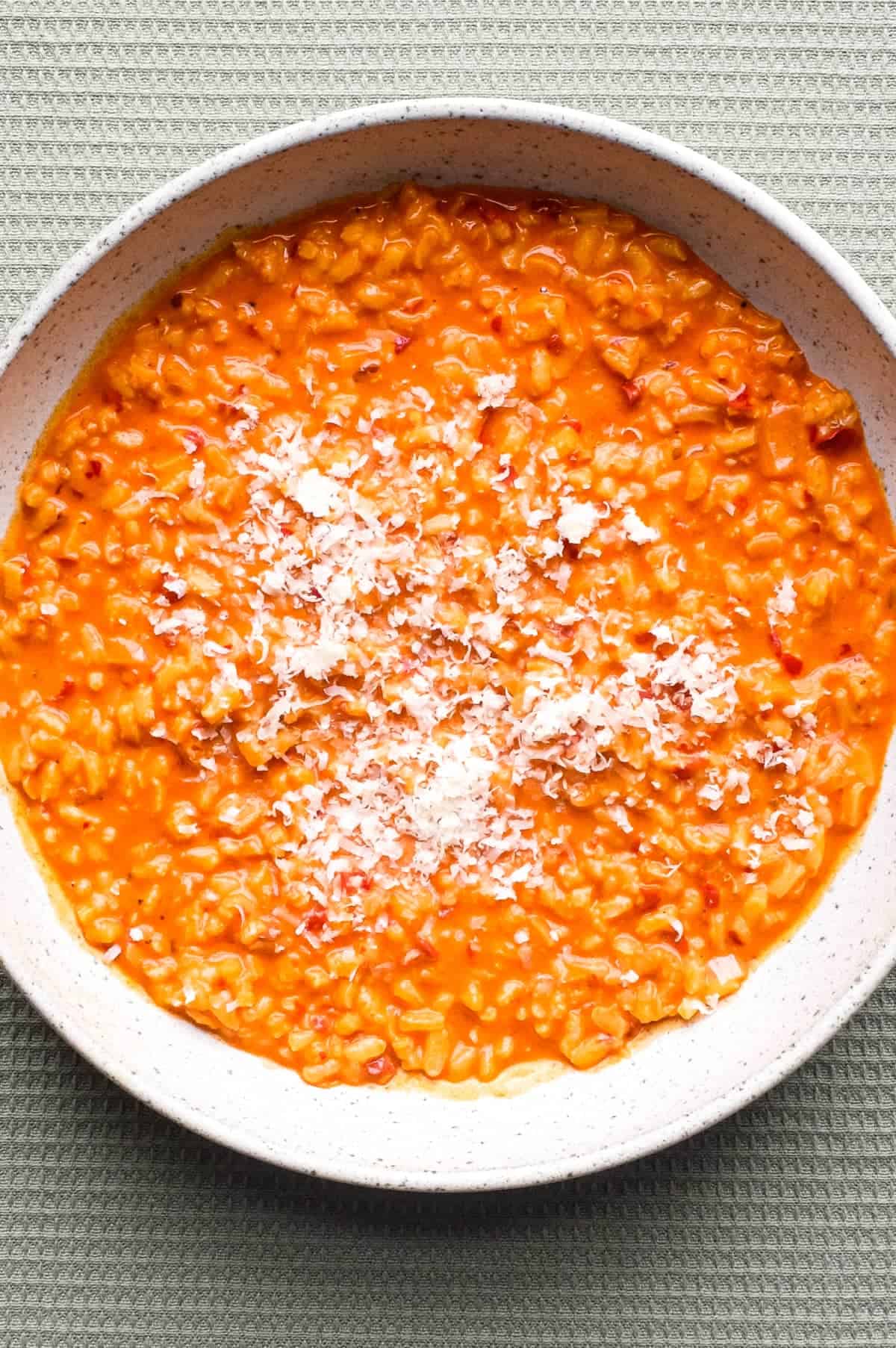
Ready to get cooking?
I just love how quick and easy this recipe is to put together at home. All the hard work is done by the nduja and it brings all the flavours of Calabria to the risotto and then some.
If you're looking for a memorable risotto, something you'll be thinking about for days, this Nduja risotto is the only choice. Buon Appetito!
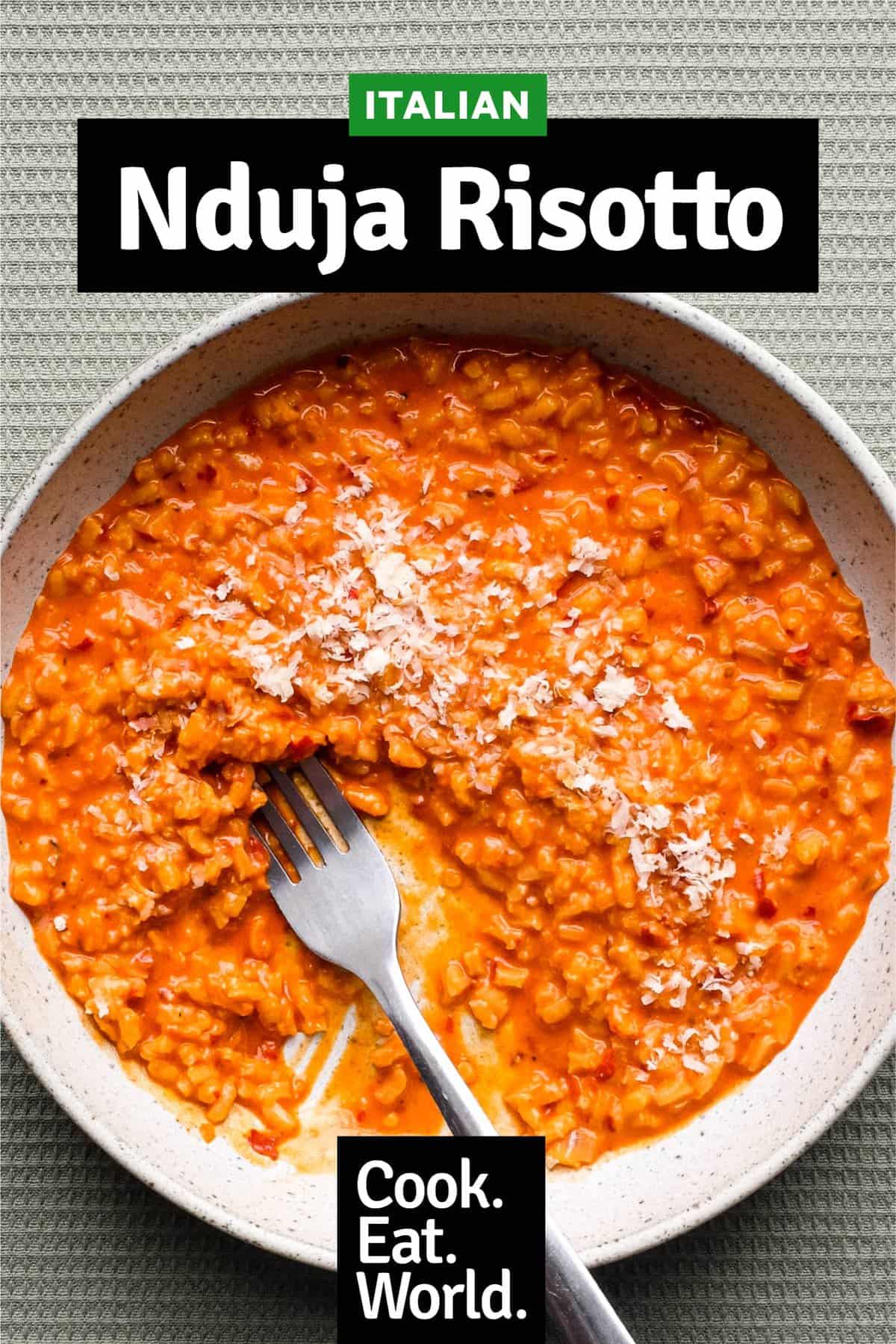
More Italian recipes
If you liked my Nduja Risotto, I'm sure you'll love more of my favourite Italian recipes.
- Pinsa Romana
- Wild Onion Pasta
- Peposo Alla Fornacina (Tuscan Beef Stew)
- Radicchio Pasta with Guanciale, Gorgonzola & Walnuts
- Lamb Ragù with Pappardelle
- Fennel Risotto
- Beetroot Risotto with Taleggio Cheese
- Pallotte – Cacio e Uova (Bread & Cheese Balls)
- Panzerotti (mini calzone pizza with tuna, olives & red pepper)
Any Questions? (FAQ)
Have a question about Nduja? Let me know in the comments.
What is Nduja?
Nduja is a spicy, spreadable pork sausage that originated in the Calabria region of southern Italy. It is typically made by grinding together parts of the pig such as the fatty belly and spicy Calabrian chili peppers, along with salt and other seasonings
'Nduja is a versatile ingredient that can be used in a variety of dishes to add a bold and spicy flavor. Here are some popular ways to use 'nduja:
- As a spread on bread for a quick and easy appetizer.
- Mixed into pasta sauces or risottos to add heat and depth of flavor.
- Topped onto pizzas or added to pizza sauce to give it a spicy kick.
- Mixed into meatballs for a spicy kick.
- Added to soups and stews.
- Used as a seasoning for grilled or roasted meats.
- Mixed into scrambled eggs for a chilli hit at breakfast.
- Mixed into mayonnaise or aioli for a spicy condiment.
This recipe uses affiliations and may receive a commission based on your activity (link clicks). Learn more.
Ingredients
- 1 tbsp olive oil
- 1 shallot (about 1/3 cup) finely diced
- 4 oz nduja (about 115g) (casing removed) or 4-5 tbsp of nduja sauce.
- 1 cup carnaroli rice
- ½ cup dry white wine
- 17 oz chicken stock (500ml)
- ½ cup mascarpone cheese
- ¼ cup parmigiano reggiano plus more for garnish
Instructions
- Heat the stock in a small pan until just simmering. Turn down the heat and keep it hot next to your risotto pan.
- Heat the oil in a deep sauté pan over a medium heat and gently fry the shallot for 2-3 minutes to soften.
- Add the nduja (removed from its casing) and fry gently for a 2-3 minutes. The sausage will break up quickly and form a kind of paste. Add a splash of water if it begins to burn.
- Add the rice and stir to combine everything and fry for 1-2 minutes.
- Add the wine, stir and let it sizzle for 30 seconds to burn off the alcohol
- Add 2-3 ladlefuls of hot chicken stock. Let this sizzle for 1-2 minutes, stirring regularly until it's reduced down. Repeat this process for 12-20 minutes, adding more stock a little at a time, and stirring regularly. The rice will be cooked when you bite into it and it's soft, with the tiniest bit of resistance. It should also be a fairly thin, creamy texture and not too dry.
- Remove from the heat and stir in the mascarpone and a little Parmigiano Reggiano (known as the 'mantecare' stage). You should have a loose creamy texture, so add a little extra stock or water if it's too thick.
- Serve hot and right away!
Notes
- For the best flavor and texture, serve your risotto hot and immediately. To prevent it from becoming overcooked or mushy, make sure everyone is seated at the table and ready to eat before you begin serving.
- I recommend serving risotto as either an appetizer or a main course, accompanied by a side of vegetables or salad. If you like, you can also add a crispy slice of prosciutto or pancetta on top for an extra layer of flavor.
- Leftover risotto can be transformed into delicious rice balls such as Arancini or Suppli. It becomes mushy over time, so I do not suggest refrigerating or freezing it.
- To ensure that your risotto turns out perfectly, make sure your stock is hot when you add it to the rice. Adding cold stock can lower the pan's temperature and affect the risotto's texture and cooking time.
- If you don't have mascarpone cheese, you can use a bit of double/whipping cream or regular cream cheese instead.
- A well-made risotto should be rich, creamy, and luxurious, not thick and heavy. Serve it immediately, as the rice will continue to absorb the sauce and thicken over time.
- Don't throw away leftover risotto! Instead, use it to make delicious arancini or suppli, which have a satisfyingly crispy texture.
Nutrition
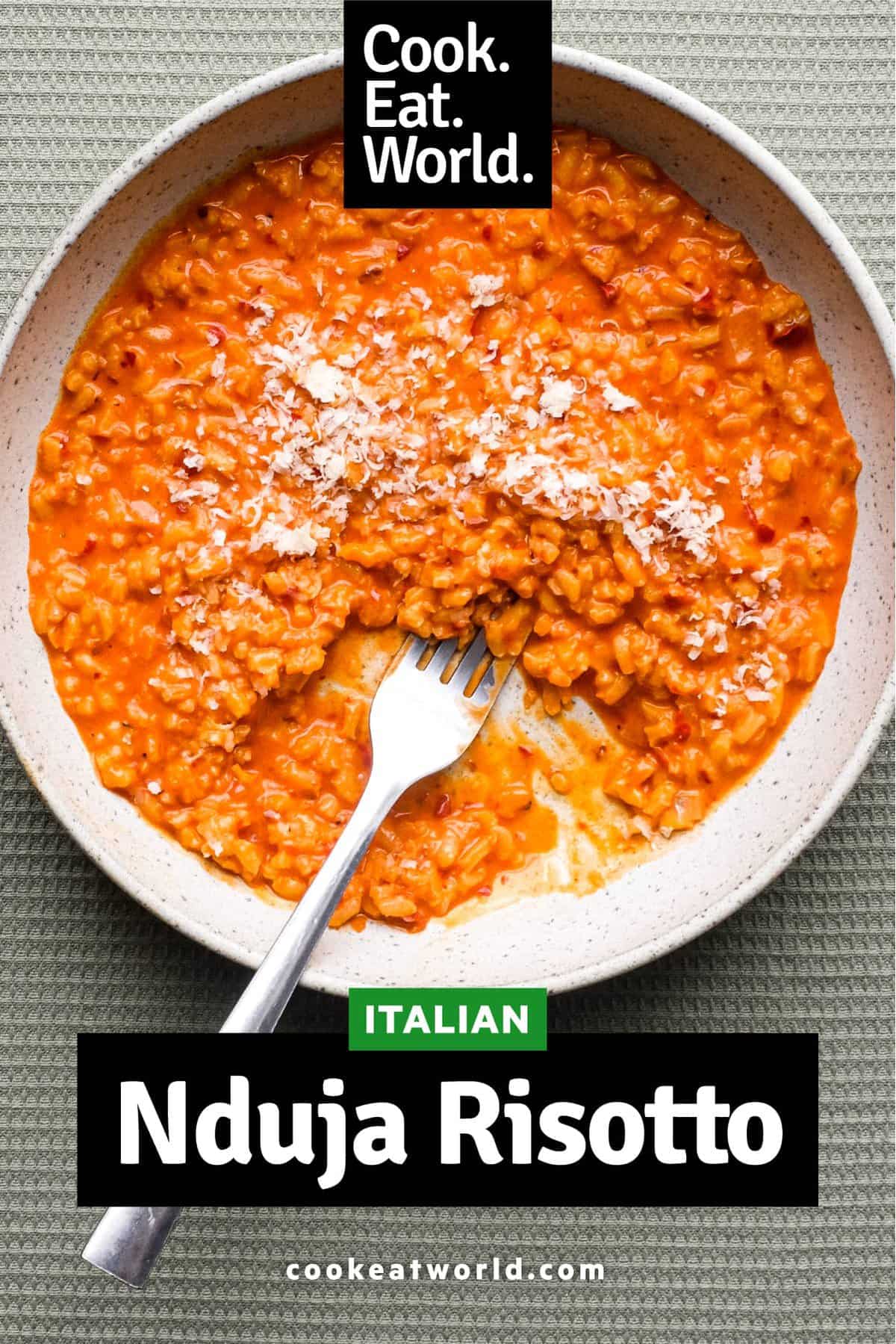
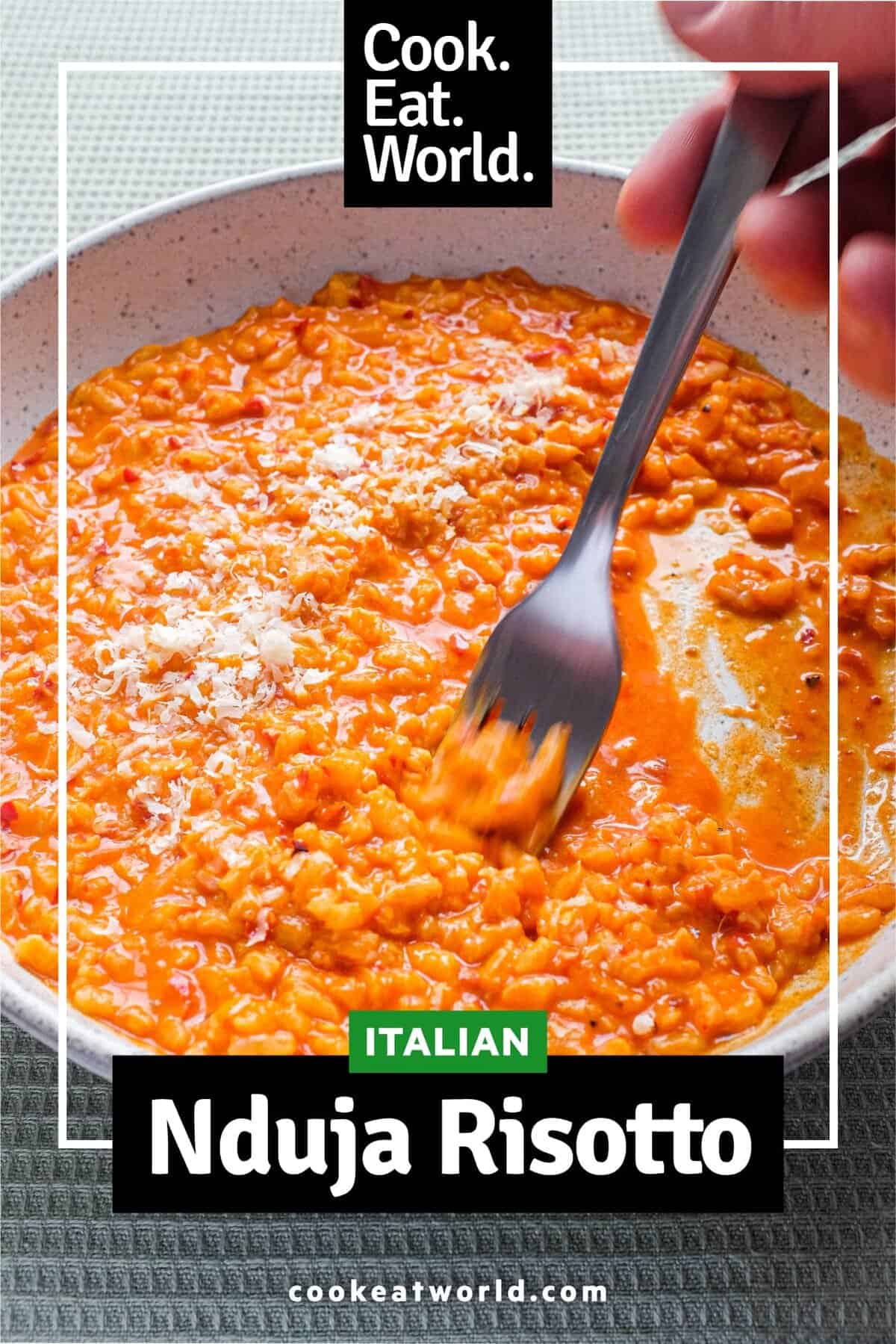
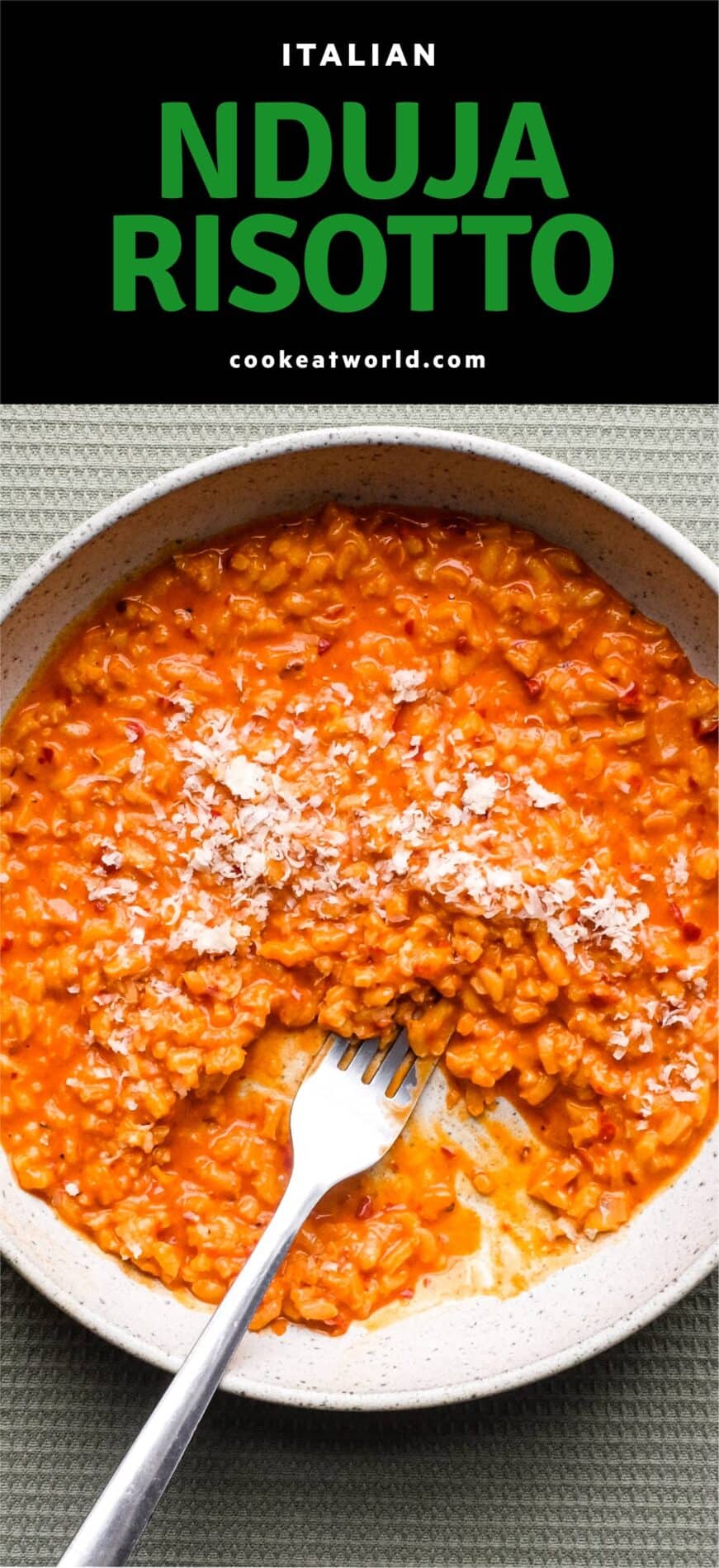

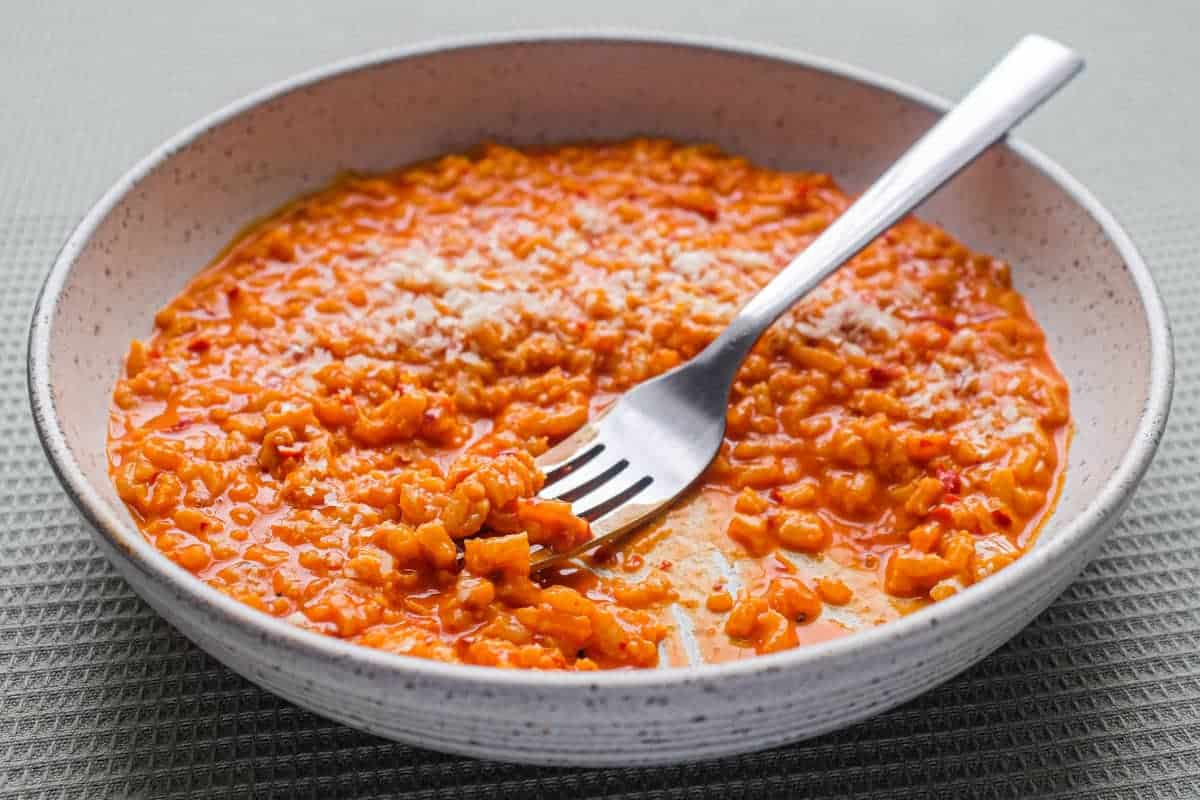
Leave A Comment